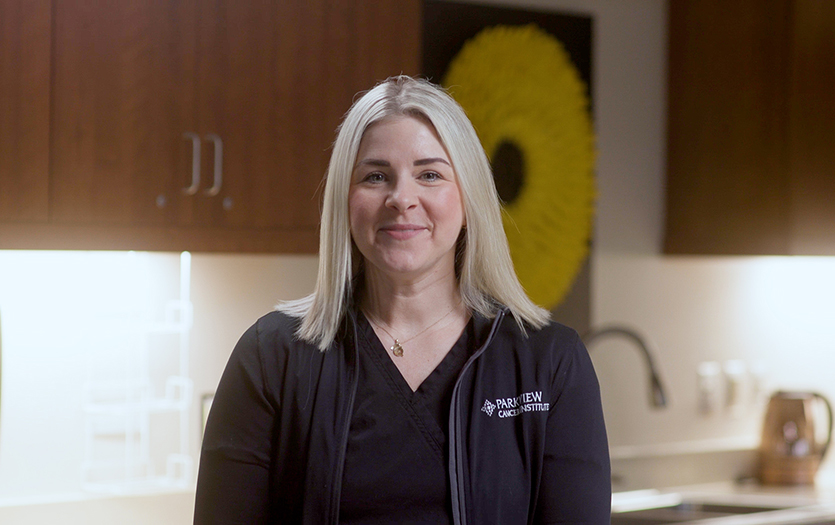We asked Ellen Szwed, DO, Oncology: Breast Care Team, Parkview Cancer Institute, to explain the process of diagnosing the stage of breast cancer and forming an effective treatment plan.
How is the stage of a cancer determined?
We evaluate the results of the mammogram to look at the size of the area, and then determine if there are lymph nodes that look abnormal. Then we biopsy the mass. When we have all of those pieces we can identify the stage.
How does an oncologist determine the best course of treatment?
Best course of treatment is determined by the stage of the cancer, as well as the markers or drivers of the cancer. We test all cells for the presence of hormone receptors, and HER2 protein, which can get over expressed and cause breast cancer.
When we know what the drivers of the cancer are, what targeted therapies we have to treat the patient before or after surgery and the surgical approach, we can begin to assemble our approach. We’re also taking into consideration how strong they are and any other health problems they might have. Once we have all of those pieces, we can form a complete treatment plan.
What questions should a patient consider/ask when discussing the treatment plan?
When someone is going through the process of diagnosis/treatment, it’s important to ask what sort of therapies they are a good candidate for, what surgery is appropriate for them, and then consider their long term goals.
What is considered the most aggressive cancer?
Forms of breast cancer that are more aggressive are the ones where we don’t know what’s causing it to grow (referred to as “triple negative”). This means they aren’t driven by hormones or HER2 protein.
What is considered a less aggressive form?
Breast cancers we consider a little less aggressive are confined in the duct or lobules, and are driven by hormones.
What type of support do we provide throughout treatment?
We try to wrap services and support around them, whether that’s nutritional, social, financial, day-to-day nursing support or other issues that come up. Our comprehensive team and nurse navigator are here to help maneuver and answer questions as necessary.



